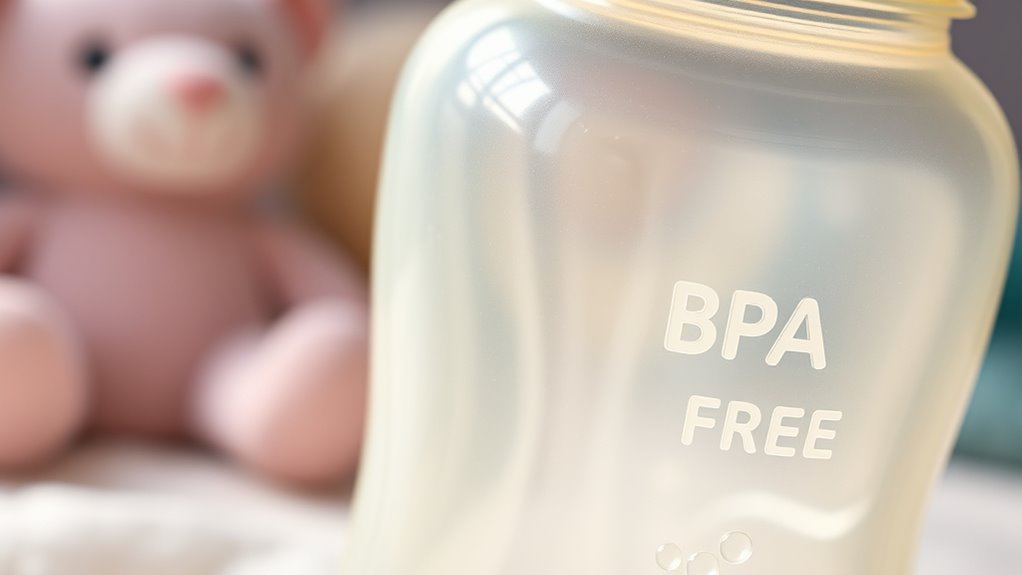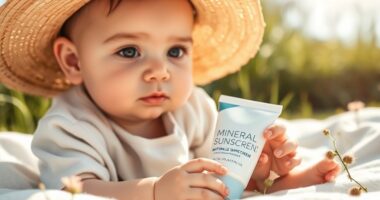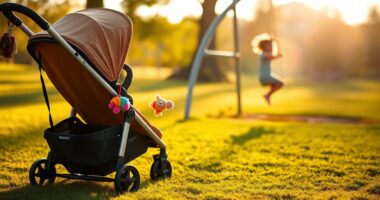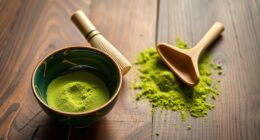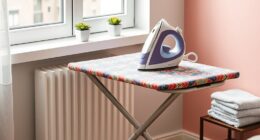BPA-free plastics in baby products aren’t always safer or more eco-friendly than traditional options. Many BPA substitutes, like BPS and BPF, can leach chemicals and may affect hormone health similar to BPA. Plus, these plastics often come from petroleum sources, raising environmental concerns. Since labels don’t guarantee safety or sustainability, it’s important to understand what’s in these products. Keep going to discover more about each material’s true impact and how to choose wisely.
Key Takeaways
- BPA-free labels do not guarantee safety, as substitutes like BPS and BPF may also disrupt hormones.
- Many BPA-free plastics can still leach harmful chemicals, especially when exposed to heat or wear.
- The environmental impact of BPA substitutes is often unclear, with potential pollution from manufacturing and disposal.
- Choosing sustainably made, recyclable, and biodegradable baby products reduces health and ecological risks.
- Regulatory oversight and consumer awareness are essential for identifying truly safe and eco-friendly baby plastics.
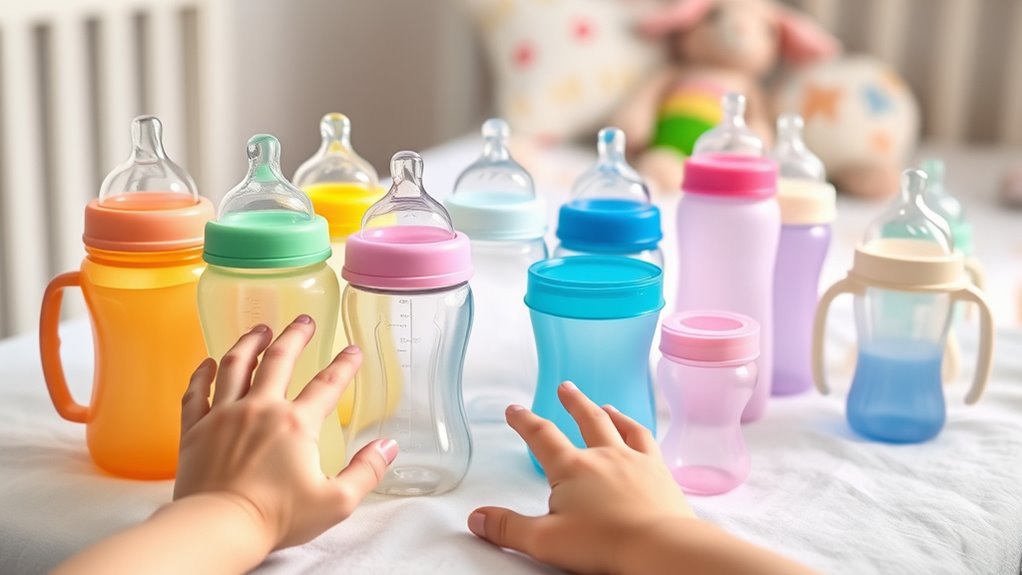
As parents become increasingly aware of potential health risks, many are turning to BPA-free plastics for their baby products. The shift aims to reduce exposure to chemicals linked to health issues, but it’s important to understand what this really means for chemical safety and environmental impact. BPA, or bisphenol A, has been associated with hormone disruption and developmental problems, prompting manufacturers to replace it with alternatives. However, just because a plastic is labeled “BPA-free” doesn’t guarantee it’s completely safe or eco-friendly. Some BPA substitutes, like BPS and BPF, have raised concerns because they may behave similarly in the body, possibly interfering with hormones just like BPA. This highlights the importance of scrutinizing the chemical safety of these plastics, rather than assuming all BPA-free options are inherently safe. You should look into whether the materials used have undergone rigorous testing for safety and whether they leach chemicals over time, especially when exposed to heat or wear. Additionally, understanding chemical stability can help determine if these plastics are likely to release harmful substances during use. As a parent, you want reassurance that your baby’s bottles or toys won’t introduce harmful substances into their delicate system.
Moreover, the presence of chemical substitutes in BPA-free plastics warrants further investigation, as they may pose similar health risks. Beyond individual health, you also need to contemplate the environmental impact of BPA-free plastics. Manufacturing these products involves sourcing specific chemicals, and the disposal process can contribute to pollution if they aren’t biodegradable or recyclable. Many BPA-free plastics are still derived from petroleum-based sources, which means they add to plastic waste and environmental degradation. When these plastics break down, they can release chemicals into soil and water, potentially affecting wildlife and ecosystems. Some BPA substitutes are less studied, so their environmental footprint remains uncertain. Research into material composition can provide insights into how sustainable these plastics truly are. Choosing products made from sustainable, recyclable materials can help mitigate this impact, but such options are not always clearly labeled or readily available. It is also crucial to consider how these plastics are tested for their long-term safety, ensuring they do not pose hidden risks over time.
Furthermore, increasing awareness and regulatory oversight can help ensure that safer, more environmentally friendly options are prioritized in the market.
Ultimately, becoming an informed consumer means looking beyond the “BPA-free” label. You should research the specific materials used, consider the manufacturing processes, and evaluate the environmental footprint. This way, you’re not only protecting your child from possible chemical risks but also contributing to a healthier planet. While BPA-free plastics are a step in the right direction, they aren’t a complete solution. Being proactive about understanding chemical safety and environmental impact helps you make better choices for your family’s well-being and the environment’s future. The more you learn, the better equipped you are to select baby products that align with your health and ecological values, ensuring a safer start for your little one.
Frequently Asked Questions
Are Bpa-Free Plastics More Environmentally Friendly?
You wonder if BPA-free plastics are more environmentally friendly. While they often seem safer, their environmental impact isn’t clear-cut. BPA-free plastics can still pose recycling challenges, as they may contain other chemicals that complicate the process. Additionally, some BPA substitutes might not be biodegradable. So, even if they’re marketed as greener, they might not considerably reduce environmental impact or ease recycling efforts, making mindful choices essential.
Can Bpa-Free Plastics Still Leach Harmful Chemicals?
You might wonder if BPA-free plastics still leach harmful chemicals. Yes, chemical migration can occur with BPA-free plastics, especially if they’re exposed to heat or wear over time. While regulatory standards aim to limit such risks, they don’t eliminate them entirely. It’s important to choose high-quality products, avoid exposing plastics to high temperatures, and replace items regularly to reduce potential chemical exposure.
How Can I Verify if a Product Is Truly Bpa-Free?
You might worry about whether a product is genuinely BPA-free, but don’t rely solely on labels. To verify, check for clear labeling accuracy and look for third-party testing seals. These independent tests confirm the product’s safety, giving you peace of mind. Always research brands known for transparent practices, and contact manufacturers if you’re unsure. This way, you guarantee the product truly meets BPA-free standards before use.
Are There Safer Alternative Materials for Baby Products?
When choosing baby products, you wonder if there are safer alternatives. You should look for products made from chemical alternatives like silicone, glass, or stainless steel, which often offer better material safety. These materials are generally free from harmful chemicals and are durable, making them safer options for your little one. Always check labels and research brands to guarantee you’re selecting truly safe, chemical-free alternatives for your baby.
Do Bpa-Free Plastics Impact Product Durability or Safety?
Did you know that BPA-free plastics often have similar chemical stability to traditional plastics? While they may impact product longevity slightly, most are designed to maintain safety and durability. You can generally trust these materials to keep your baby’s items safe and functional over time. However, always check product labels and care instructions to guarantee maximum safety and longevity, as some BPA-free plastics may vary in durability depending on the formulation.
Conclusion
Now that you know the facts, it’s clear that “BPA-free” doesn’t always mean completely safe. You must stay vigilant and read labels carefully, for in the days of yore, folks trusted simple ingredients over flashy claims. While these plastics are a better choice, they aren’t foolproof. Use your judgment, stay informed, and prioritize your baby’s health—after all, in the grand scheme of things, it’s your love and care that truly matter most.
